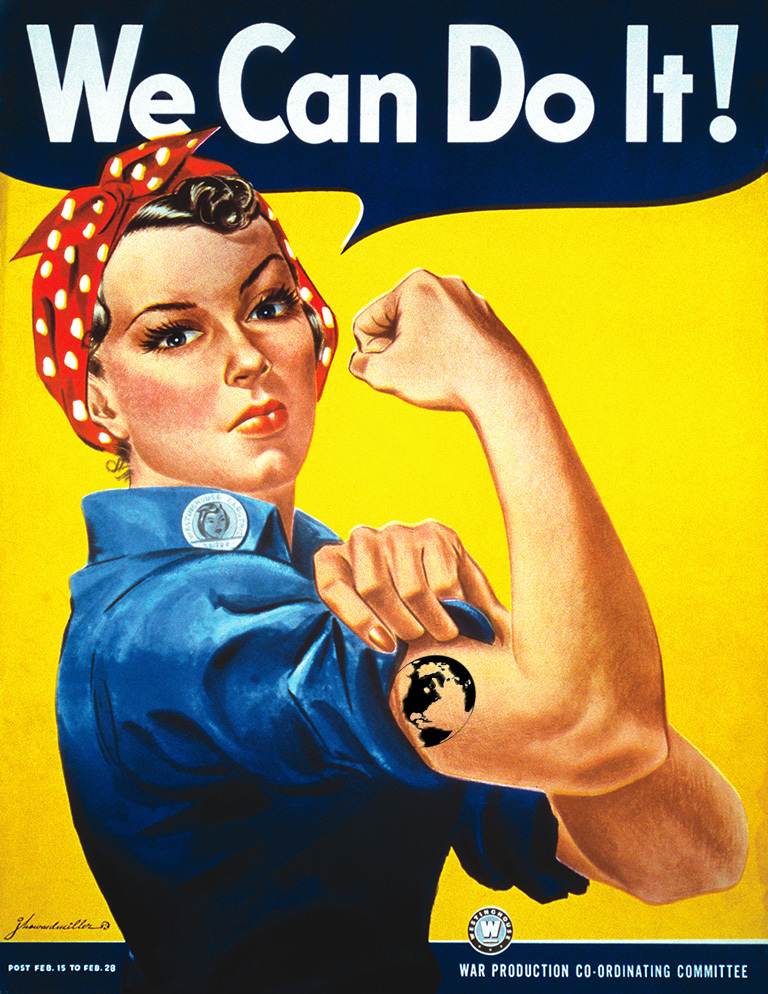Ask NASA Climate | April 28, 2016, 09:57 PDT
We're over being bummed about climate change and ready for solutions.

Modified from Wikimedia Commons.
If you’re anything like me, sometimes you feel a bit pessimistic. You can get caught in a bubble of icky vibes that bring you down. This is why I had difficulty writing about a conversation that climate communications expert Susan Hassol and I had about climate hope. We were discussing how to look toward the reality of climate change without freaking out or turning away. We agreed that being afraid is not helpful, and that a better response to the problem includes facing climate change with courage, optimism and integrity, while still feeling all of the stressful emotions, even though that’s hard.
Then I went out to Riverside, Calif., where I gave a speech at the American Public Works Association, a group of city planners, public works officers, contractors and consultants who draw up plans for building roads, bridges, buildings and landscaping. I learned about an extremely drought-tolerant grass species especially developed to avoid wasting water on golf courses. I sat near a guy who consulted a number of cities across California on their plans for multi-use pedestrian/cyclist/automobile roads.
In an instant, I understood Hassol’s point: “Of course there’s a huge problem, but if you keep hitting people with problems, they just want to pull the covers over their head. Focusing on the solutions is energizing, it’s inspiring, as opposed to leaving people so depressed that they have no energy to act. There really is a lot to be positive about.”
Look, I know it’s really hard to be optimistic when you’re down. So the best antidote to fight off the climate blues, according to Hassol, is to take action. “I do more work, give more talks, work with more scientists, get out there, and give people real hope. I also balance my reading,” she continued. “For every couple of articles I read in science journals about the melting poles, the hottest year on record, the worst fire season on record, the flooding, I try to look at what’s happening on the solutions side: the growth in solar and wind, the improvements in the economics of renewable energy, the ambitious action taking place in cities, states and countries around the world.”
“What makes people happier is more time to do the things that really matter,” Hassol continued. “Stuff is not what makes us happy. Relationships are what make us happy, walks in the woods, reading books with your kid. None of those things are based on consuming. This is about having more integrity in our lifestyle choices, about having more time, more peace. We can grow personally, without always growing the economy.”
There’s an extra positive bonus, she added: “You’ll know that you’re making a positive contribution to the world.”
Climate change is not distant in time or space. It’s in our own backyard now, affecting all of us. And we’re going to pay, one way or another, or as Hassol then reframed it more positively, “The sooner we reduce emissions, the less it will cost. So let’s do as much as we can, as fast as we can.”
She excitedly went on to list a number of positives, namely the big increases in renewable energy use across the board, from individuals to cities:
- Scotland generated nearly 60 percent of its electricity with renewables in 2015 and is aiming for 100 percent.
- Nine massive U.S. companies pledged to go 100 percent renewable, including Nike, Walmart, Goldman-Sachs, Johnson and Johnson, Proctor and Gamble, and Starbucks. This is a good financial investment, given that the most ambitious companies have seen a 27 percent return on their investments. They’re not doing it because they love polar bears; they’re doing it because it’s good for their bottom line.
- Goldman-Sachs in particular says it’s going for 100 percent renewables by 2020.
Between climate change and El Niño, 2016 will likely break the global temperature record. But we’ll potentially have a turning point with renewables, so this year could be big. Listening to her voice got me excited, even though I’d woken up melancholy.
I wondered when climate change and a strong push for renewables will make its way to the top of the inbox. “The thing that gives me the most hope,” she said, “is that I feel we’re right at that inflection point right now. It’s not a time to let up, it’s a time to push hard.”
Thanks for reading. I look forward to your comments.
Laura
